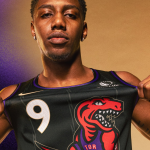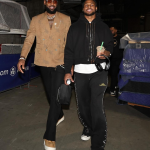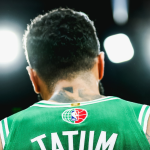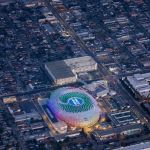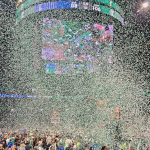
The sun never set on the Celtic Nation
How Boston won its 18th title and what it represents for the NBA
June 18th, 2024
Game, set, match, championship: the Boston Celtics have done it, winning Game 5 of the NBA Finals and securing their 18th NBA title. Yesterday's win over Luka Doncic and his Dallas Mavericks (106-88) capped a postseason that was widely dominated by the Greens, led by Jayson Tatum, Finals MVP Jaylen Brown and an elite line-up (led by White, Holiday, Horford and Porzingis). Coach Joe Mazzulla's team advanced to the Finals after winning 12 of 14 games in the Eastern Conference standings, and even against the West Coast champions, they conceded just one game, at 3-0, when the series was already over. That's why the long-awaited banner with the number 18, which puts the Massachusetts franchise back in front of the Lakers after the 2020 tie, will soon be hung at TD Garden.
The side dish: next season's opening night with the traditional presentation of the rings - a festive evening that Boston has missed since 2008, the year of its last title. In that time, Brad Stevens' team, who was coach for eight seasons (2013-2021) and then President of Basketball Operations, has gone through a rebuilding phase before entering the "championship window," as it's known overseas; a window that was and is particularly long and a reward for the planning and patience of the front office, long led by Danny Ainge. In the meantime, the public has grown accustomed - and a bit bored, as happens to those 'guilty' of not changing their look for years - to seeing the Celtics consistently perform at the highest level. Six Conference Finals and three NBA Finals have been played from 2016 to the present, with the franchise's fortunes off the court in the hands of two sons of the organisation like Stevens and Mazzulla and on the floor by two homegrown talents like Tatum and Brown. The most important goal, the Larry O'Brien Trophy, was missing. Not anymore.
Winning at the TD Garden
The Green managed to cap it all off and treat themselves to the coveted celebration parade expected to hit the streets of Beantown later today. And then finally a carefree summer, with no regrets of any kind. It certainly won't be the loss in Game 4 in Dallas (122-84), however emphatic, that seemed to have at least called into question the sluggishness of the series. On the contrary, Friday's game was one of the very few missteps in recent weeks and, in hindsight, the classic proverbial bad for the good. It basically gave the Celtics a championship shot in their own four walls - sold out, of course, and at outstanding prices - and without much ado, both because of the 3-1 result and because of the certified gap between the two teams. Of course, such a moment is and remains every basketball player's dream, regardless of the context and atmosphere - but experiencing it together with your own fans is a different story, as the pictures from the TD Garden last night show.
It's a different story especially for Celtic Nation, whose older members witnessed the Rings' revelry in the 60s, 70s and 80s, but have become increasingly nostalgic since 1986 (penultimate title) to the present day and share little to nothing with the younger generation. In all, 42 banners will hang from the ceiling of the TD Garden, if you count the 24 jerseys that have been retired: a density of banners that reflects the glorious tradition of the franchise, with the signatures of so many champions who have helped make it so. From Auerbach to Russell, Bird to Garnett, via Parish, Havlicek, McHale, Pierce and some fifteen other green-and-white legends - another NBA record that confirms the dualism with the Lakers.
Above all, it is the history and tradition that have made TD Garden evolve from Boston Arena and Boston Garden, making it one of the most recognisable sports venues in the world. Its signature feature, the iconic 'criss-cross parquet', has its roots in the early days of the organisation, in the 1940s and 1950s. Originally it was due to the quality of the wood used, which was not of the highest grade, but it soon became the franchise's identity marker and in some ways its symbol, so much so that in '99, when the floor was replaced, some pieces were given away to the team's most loyal fans. Some have only recently made the headlines again, such as a piece of the court signed by Bill Russell and used in the 1957 NBA Finals, which was auctioned on the Goldin platform for $8,750.
"Bleeding green"
A home win has always had a special flavour for the Celtics, precisely because of the feeling of having picked up and honoured a prestigious baton in a basketball temple; and this is even more true for all generations after the time when the team exercised unchallenged dominance over the league in the three post-war decades. However, the Celtics' image, identity and culture did not suffer (too much) from the lack of success during this period, nor did the franchise's global popularity and commercial value. Boston has always been a benchmark for the NBA worldwide, even in unexciting sporting times. With the advent of globalisation, it has been an ambassador and staunch ally of first David Stern and then Adam Silver. Last season, the green and white jerseys were the third best-selling of all time, thanks largely to Tatum's jerseys (the fifth best-selling) and Brown's (the thirteenth best-selling), but also thanks to vintage jerseys, including, of course, Larry Bird's Mitchell & Ness Hardwood Classics.
Although their catchment area is not particularly large and the Celtics compete with the Red Sox (MLB), the Bruins (NHL) and the Patriots (NFL), they are a 'big market' in the geopolitics of the NBA, which is confirmed by the large media presence. In the metropolitan area, the fan base is around two million people: a following that is very close to the team and that 'bleeds green', as one of their slogans goes; plus a widespread international following: a bit all over Europe, but not only, also in the Philippines, in China (despite the Kanter case), in Russia and in many countries outside the United States, from which, for example, around 49% of followers on social profiles come.
The team's history and culture are the most important assets of the Boston Celtics, the fourth most valuable franchise in the NBA (over 5 billion dollars) and the only one, along with the New York Knicks, to have always played in the same city and with the same name. A story that began in 1946, when the owners of the most important arenas in the United States - including Walter Brown in Boston - laid the foundation for today's NBA. They could have been called 'Unicorns' or 'Whirlwinds', both names that were considered at the time of the founding, but 'Celtics" was chosen instead due to the strong presence of Irish immigrants in the city. The only evolution in branding concerned the logo, which went from the shamrock of the late 1940s to the famous leprechaun whose silhouette evolved over the decades into the design introduced in 1996 and destined for the Olympus of sports logos. There isn't a corner of the world where this crest isn't known, where there isn't someone who 'bleeds green' and who had a sweet awakening this morning when they became NBA champions for the 18th time.












